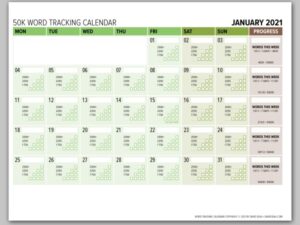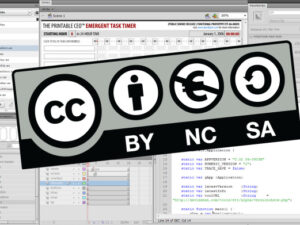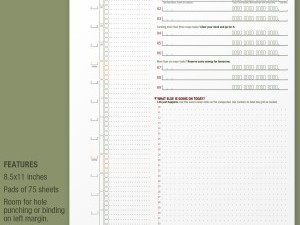(last edited on November 27, 2022 at 9:21 pm)
Earlier this week I’d been working to create a nice typographic template using Cascading Style Sheets (CSS). This is not my favorite kind of work, but having identified my methodical process challenge a few days ago, I pushed myself through it without the usual two scoops of drama. I ended up with something I felt good about, a solid bit of code that I can reuse in the future.
For technical people, the production of useful code is not a big deal, but it was notable to me because of my shift in perspective. The way I had approached the challenge was like that of an industrial researcher, which isn’t surprising given I’d just seen a documentary about the life of African-American chemist Dr. Percy Julian. I have a natural curiosity about the way things work together to achieve some end, but I find the implementation to be more of a chore when I’m working by myself. Having seen that documentary, however, I could recast the drudgery of working around Internet Explorer’s CSS bugs as part of a greater process. I was, in fact, applying the scientific method to my creative work, which is a methodology that I am naturally drawn to.
Perhaps the missing creative methodology I lamented over in my earlier post has been with me all along; do I just need to broaden my views on creativity and science?
A Detour through Design
The work-for-hire I’ve done has historically been in the areas of interactive media and graphic design, and this lumps me into the creative class. As much as I love looking at high-end creative work, I’ve personally been uncomfortable labeling myself as a “Designer” or a “Creative”. Not that this hasn’t kept me from wanting to reach the lofty heights scaled by Capital D Designers like Milton Glaser, Paul Rand, and Craig Frazier. And then there are the scores of incredible visual artists that I come across every day who somehow produce works of transcendant quality. It seems that everyone I meet in the field has no problem getting on with the act of creation. I tend to rev high in the ideation phase, which precurses the practical business of creation. This has always bothered me.
When it’s time to sit down and crank something out, I sit staring at the screen thinking of all the things I know I need to do. Then I get sleepy. Or I am readily distracted by some other thought. When I catch myself doing this, I usually use the trick of writing a paragraph about what I need to do. This linearizes the processes of my mind (writing demands this, if you are writing to make sense), and this is a form of focus. When I have to write about what I’m doing, I find that it’s a lot easier to get in the spirit of things.
This is not what terrifies me, though. What scares me is being creative. That is, creating something that is deftly original, insightful, witty, entertaining in the first few hundred milliseconds of exposure to an audience. That’s what I’m aiming for when I am faced with a design task, and up to now I wasn’t sure how to do it on purpose.
A major insight came to me a few months ago, when I realized that a lof people are entirely happy with design that does the job. For example, a web page that’s easy to read is delightful, and the ability to line things up to make sense is very much in demand. This insight was the genesis of my current business card design, which graphically illustrates the stages of information graphic design as I perceive it. It stops short, though, of promising that scary high-end creative stuff.
A Collision of Processes
Why stop with information graphics? Can one scientifically approach creativity? I have been approaching it from this angle all along, because it’s the most accessible route for me. However, I’ve always thought it was the wrong way, as most of the highly-talented and creative people I know don’t like thinking about methodology and science. They just do. They feel the urge to create and **express*. Me, I’m always thinking of the ramifications before the paint even comes out of the tube, and then I have to ask what the paint is made of.
I have been looking for a unifying model of my various interests for a long time, and the idea of being a creative that practices the scientific method to achieve his ends is very appealing. Now that I think about it, artists and designers already do the same thing**, learning, pioneering and refining techniques through a critical iterative process. What’s different are the props and metrics used to create and evaluate the results of the process respectively. Designers use graphics, engineers use technology, writers use words, and apply different criteria for judgement. The ways of discovering new forms, however, are fundamental processes. While the scientific method is generally understood to use rational metrics, the creative process emphasizes emotional impact. It’s the old quantative versus qualitative argument again.
The Scientific Creative Method, then, is the application of both rational and emotional criteria in the pursuit of research and development. This is a significant realization for me because it tells me that creativity “comes from out of thin air”. It might come in a flash of inspiration (an emotionally valid source), or it might come from the “lab work” of pushing around pixels on the screen until something happens.
The Process as Responsible Entity
An artist friend of mine told me that when he started drawing, he had no idea what was going to come out. That he’s comfortable with this knowledge in a production design environment is really fascinating…he trusts the process. I can do the same thing. Before I used to worry if I was really creative or not, and this made me worry that I was misrepresenting my abilities.
No more. I have a process that works for me, and I need to trust it. The ability to be professionally creative isn’t the result of “being born that way”, it’s the result of having a process in the first place. And—this is very strange—it’s process that is responsible for creating results, not me! I am responsible for channeled the process through myself, otherwise nothing will happen. It’s also my job to be the “best” person I can be, and it is this that shapes process in sublime and wonderful ways.
Conclusion
This is a very round-about way of approaching the productivity and creativity, but I hope that some of you out there get what I’m talking about. I am also, in a way, addressing certain forms of procrastination-perfectionism. I am often demoralized by the sheer number of details I can envision and plan for (this is when I’m working solo). What I can tell myself now is that the endless task list is not just a lot of drudgework: it is fundamental process, and that to be a good practitioner of the scientific creative method, it is where I must go. It is no longer a question of laziness, but one of principle and character. I feel I am drawing on the spirit of the great applied researchers past and present, driven by curiosity and eager to apply my newfound understanding. It is, for me, the right thing to do.
The idea that I am pursuing a “science of applied creativity” gives me a framework around which I can agregate my interests in media, technology, psychology, and design. My desires, however, are still the same: to be around positive-minded, conscientious, kind, and empowered people. The way to achieve that, I believe, will be by creating the reality in which we can thrive. Until now, I didn’t see how that might be achieved without getting better at being creative, but now I see a glimmer of light.





3 Comments
Off topic
Hi David, I’m Italian and I not sure about how to pronounce your surname, could you help me?
Your blog is great, congratulations!
——-
Wow, what a great entry to come across. I am a grad student in physical chemistry, and often I’m thinking of how to make my science more creative! I want the spark of creativity, intuition, and imagination that will lead me to try an experiment or approach that will enlighten my project, lead to better processes, and push my research forward quickly, efficiently, and intelligently.
I am realizing that the process is what leads us, no matter what our fields, to become creative, since it’s the doing that stimulates new, creative ideas.
Thanks for the entry.
Stumbled onto your blog while chasing down a renderbug, but this post caught my eye enough to come back later.
I definitely like the industrial-researcher metaphor. The one that I find works best for me is craftsman. I find I’m much more patient with browser quirks when I view them as a vehicle for discovering something new, rather than simply an obstacle to overcome.
On an unrelated note, I managed to miss the documentary about Dr. Percy Julian, but I used to train Aikido with his son (a civil-rights attorney and a remarkable guy in his own right).